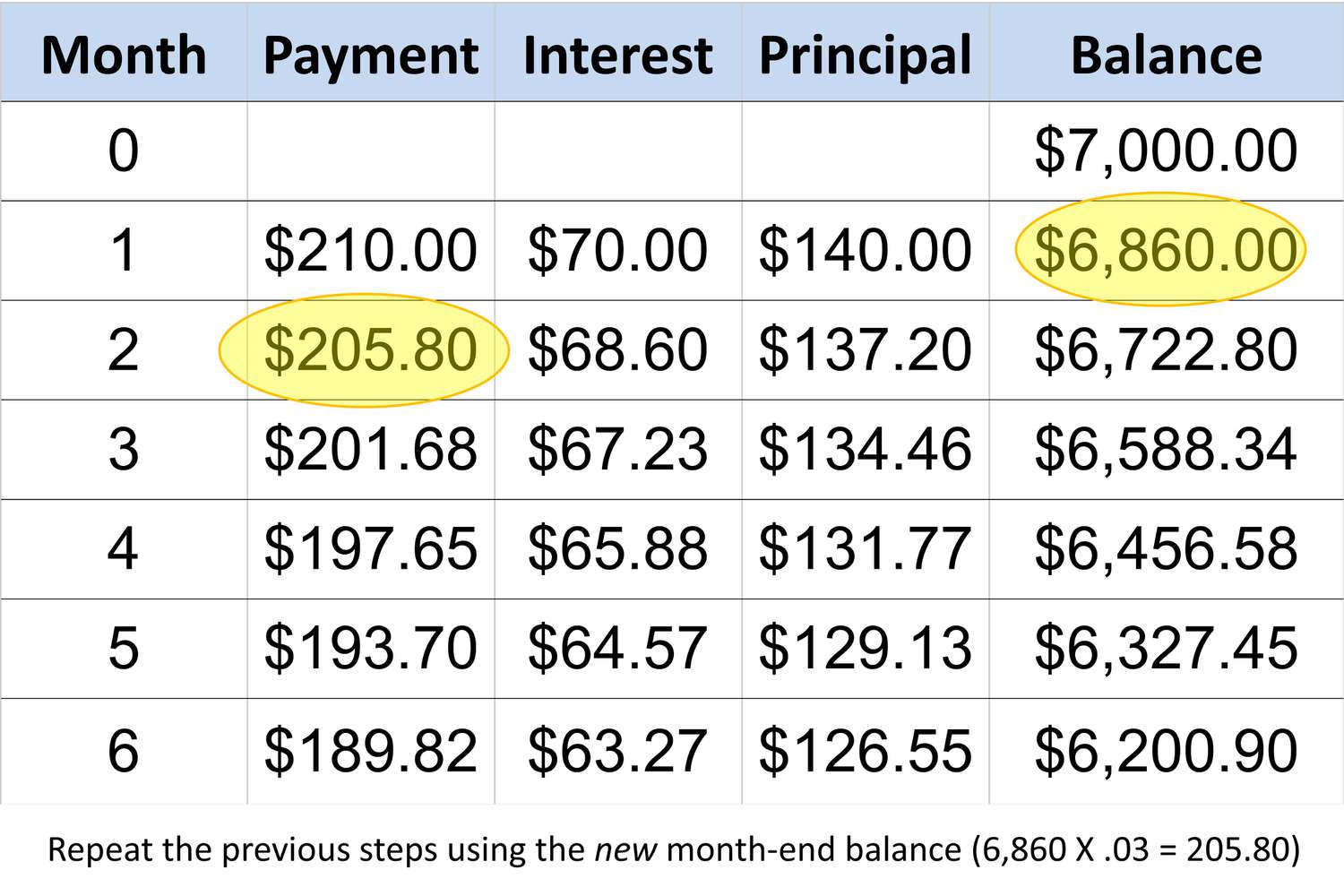Home>Finance>What Is The Minimum Payment On A Credit Card Transfer


Finance
What Is The Minimum Payment On A Credit Card Transfer
Published: February 25, 2024
Learn how to calculate the minimum payment for a credit card transfer and manage your finances effectively. Find out more about finance and credit card payments.
(Many of the links in this article redirect to a specific reviewed product. Your purchase of these products through affiliate links helps to generate commission for LiveWell, at no extra cost. Learn more)
Table of Contents
Understanding the Minimum Payment on a Credit Card Transfer
Introduction
Credit card transfers can be an effective tool for managing debt and reducing interest payments. When you transfer a balance from one credit card to another with a lower interest rate, you can potentially save money and pay off your debt more efficiently. However, it's essential to understand the concept of minimum payments on credit card transfers to make informed financial decisions.
Credit card minimum payments are the smallest amount you are required to pay each month to keep your account in good standing. When you transfer a balance to a new credit card, the minimum payment is a crucial aspect to consider, as it directly impacts your financial obligations and the overall cost of the transfer.
In this article, we will delve into the specifics of minimum payments on credit card transfers, exploring the factors that influence these payments, how they are calculated, and the significance of making timely minimum payments. Additionally, we will examine the potential consequences of failing to meet these obligations, shedding light on the importance of responsible credit management.
Understanding the dynamics of minimum payments on credit card transfers is vital for anyone seeking to leverage balance transfers as a debt management strategy. By gaining insights into this aspect of credit card management, individuals can make informed choices that align with their financial goals and ultimately pave the way towards greater financial stability and freedom.
Understanding Credit Card Transfers
Credit card transfers, often referred to as balance transfers, involve moving the outstanding balance from one credit card to another, typically with the goal of obtaining a lower interest rate. This process can be advantageous for individuals looking to consolidate their credit card debt or reduce the overall interest paid on existing balances.
When you transfer a balance from one credit card to another, it’s essential to comprehend the terms and conditions associated with the new card, particularly regarding the minimum payment requirements. The new card issuer will specify the minimum amount you must pay each month to keep the account in good standing. This minimum payment is typically calculated as a percentage of the outstanding balance, subject to a minimum dollar amount.
One of the primary motivations for initiating a credit card transfer is to benefit from a lower interest rate, thereby reducing the overall cost of carrying the debt. By securing a lower interest rate, a larger portion of your monthly payment goes towards reducing the principal balance, enabling you to pay off the debt more efficiently. However, it’s crucial to consider the minimum payment requirements, as they directly impact your financial obligations and the timeline for debt repayment.
Furthermore, credit card transfers often come with promotional periods during which a lower or even 0% interest rate is applied to the transferred balance. This promotional period can provide a window of opportunity to make significant progress in paying down the debt. Understanding the terms of the promotional period and the subsequent interest rate that will apply after its expiration is essential for effective debt management.
While credit card transfers can offer substantial financial benefits, it’s important to approach them with a clear understanding of the associated terms, including minimum payment requirements and any potential fees or limitations. By comprehensively grasping the dynamics of credit card transfers, individuals can make informed decisions that align with their financial objectives and contribute to their long-term financial well-being.
Factors Affecting Minimum Payments
Several key factors influence the minimum payments required on credit card transfers, each playing a significant role in determining the financial obligations associated with the transferred balance. Understanding these factors is crucial for individuals seeking to manage their credit card debt effectively and make informed decisions regarding balance transfers.
Outstanding Balance: The amount of the outstanding balance directly impacts the minimum payment. Typically, the minimum payment is calculated as a percentage of the total balance, ensuring that a higher outstanding balance results in a larger minimum payment requirement. This factor underscores the importance of diligently managing the balance transferred and considering its implications on monthly financial commitments.
Interest Rate: The interest rate applied to the transferred balance is a pivotal determinant of the minimum payment. A higher interest rate results in a greater portion of the minimum payment going towards interest, potentially extending the time required to pay off the debt. Conversely, a lower interest rate can facilitate more rapid debt reduction, as a larger portion of the payment contributes to reducing the principal balance.
Promotional Period: If the credit card transfer involves a promotional period with a reduced or 0% interest rate, the minimum payment calculation may be influenced by the terms of this promotional period. Understanding how the minimum payment requirement may change once the promotional period ends is essential for effective financial planning and debt management.
Credit Card Terms: The specific terms and conditions of the new credit card, including any introductory offers, fees, and limitations, can impact the minimum payment. It is crucial to review the terms of the new card carefully to gain a comprehensive understanding of the minimum payment requirements and any potential implications for the overall cost of the transfer.
Payment Allocation: How the credit card issuer allocates payments can also affect the minimum payment. Understanding whether payments are allocated towards the balance with the lowest interest rate or other specific categories can provide insights into how to strategically manage the debt and meet minimum payment obligations effectively.
By considering these factors, individuals can gain a deeper understanding of the dynamics shaping the minimum payment requirements on credit card transfers. This knowledge empowers informed decision-making and facilitates proactive management of credit card debt, ultimately contributing to enhanced financial stability and well-being.
Calculating the Minimum Payment
The minimum payment on a credit card transfer is typically calculated based on specific parameters established by the card issuer. While the exact method of calculation may vary among issuers, the following elements commonly influence the determination of the minimum payment:
Percentage of the Outstanding Balance: One of the primary factors used in calculating the minimum payment is a percentage of the outstanding balance. This percentage, often ranging from 1% to 3% of the total balance, forms the baseline for the minimum payment amount. As the outstanding balance fluctuates, the minimum payment adjusts accordingly, ensuring that a larger balance results in a higher minimum payment requirement.
Minimum Dollar Amount: In addition to the percentage-based calculation, credit card issuers typically impose a minimum dollar amount that must be paid each month, regardless of the outstanding balance. This minimum threshold ensures that even small balances require a minimum payment, preventing the accumulation of negligible amounts over time.
Interest and Fees: The impact of interest and fees on the minimum payment calculation is a crucial consideration. When interest and fees accrue, they contribute to the total balance, subsequently affecting the minimum payment requirement. Understanding how these additional charges influence the minimum payment empowers individuals to anticipate and manage their financial obligations effectively.
It’s important to note that the method of calculating the minimum payment can significantly impact the overall cost and timeline for repaying the transferred balance. By gaining insights into the specific parameters used by the card issuer to calculate the minimum payment, individuals can make informed decisions regarding their financial commitments and develop strategies for efficient debt management.
Furthermore, understanding the nuances of minimum payment calculation can help individuals proactively plan their monthly budgets and allocate resources to meet their financial obligations. By staying cognizant of the factors that influence the minimum payment, individuals can navigate credit card transfers with greater confidence and ensure that their debt management efforts align with their broader financial goals.
Importance of Making Minimum Payments
Making minimum payments on a credit card transfer is a fundamental aspect of responsible financial management, carrying significant implications for an individual’s credit standing, debt reduction efforts, and overall financial well-being. Understanding the importance of meeting minimum payment obligations is essential for individuals seeking to leverage credit card transfers as a tool for debt management and financial stability.
Credit Standing: Consistently making at least the minimum payment on a credit card transfer is vital for maintaining a positive credit standing. Timely minimum payments demonstrate financial responsibility and reliability to creditors and credit reporting agencies, contributing to a positive credit history. Conversely, failure to make minimum payments can lead to negative marks on one’s credit report, potentially impacting future borrowing opportunities and financial credibility.
Debt Reduction: While making minimum payments may not significantly reduce the principal balance in the short term, it prevents the accumulation of additional fees, penalties, and interest charges. By meeting the minimum payment requirement, individuals can avoid further escalation of their debt and position themselves to make progress in paying down the balance over time.
Financial Discipline: Meeting minimum payment obligations fosters financial discipline and accountability. It encourages individuals to prioritize their financial commitments, manage their resources effectively, and adhere to a structured repayment plan. Cultivating these habits is integral to long-term financial stability and the attainment of broader financial goals.
Relationship with Creditors: Consistently meeting minimum payment requirements can positively influence an individual’s relationship with creditors. It demonstrates a commitment to fulfilling financial obligations and may open avenues for potential assistance, such as hardship programs or renegotiation of terms in challenging circumstances.
Recognizing the significance of making minimum payments on credit card transfers empowers individuals to approach their financial responsibilities proactively and strategically. By acknowledging the impact of minimum payments on credit standing, debt reduction, financial discipline, and creditor relationships, individuals can prioritize these obligations and leverage credit card transfers as a means to achieve greater financial stability and freedom.
Consequences of Not Making Minimum Payments
Failing to make minimum payments on a credit card transfer can have far-reaching consequences that impact an individual’s financial well-being, credit standing, and overall debt management efforts. Understanding the potential ramifications of not meeting minimum payment obligations is crucial for individuals seeking to navigate their financial responsibilities effectively and mitigate adverse outcomes.
Impact on Credit Score: Non-payment or late payment of minimum amounts can lead to negative reporting on an individual’s credit history. This can result in a lower credit score, making it more challenging to secure favorable terms for future credit products, such as loans or mortgages. A diminished credit score can also affect employment opportunities and rental applications, as many employers and landlords review credit reports as part of their evaluation process.
Accumulation of Fees and Penalties: Not meeting minimum payment requirements often incurs additional fees and penalties, exacerbating the financial burden. These extra charges contribute to an increase in the overall debt, prolonging the time required to pay off the balance and amplifying the financial strain on the individual.
Escalation of Debt: Failing to make minimum payments can lead to a snowball effect, causing the debt to grow rapidly due to compounding interest and fees. This escalation of debt creates a more significant financial obstacle to overcome, potentially resulting in prolonged financial distress and limited options for debt resolution.
Limited Access to Credit: Non-payment of minimum amounts can lead to the suspension of credit privileges and may hinder the individual’s ability to access additional credit in the future. This limitation can impede the individual’s financial flexibility and ability to address unforeseen expenses or investment opportunities.
By recognizing the potential consequences of not making minimum payments on credit card transfers, individuals can prioritize these obligations and take proactive measures to fulfill their financial responsibilities. Timely and consistent payment of minimum amounts is essential for safeguarding credit standing, managing debt effectively, and positioning oneself for long-term financial stability and success.














